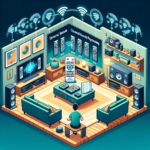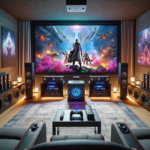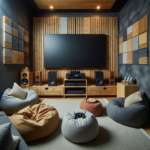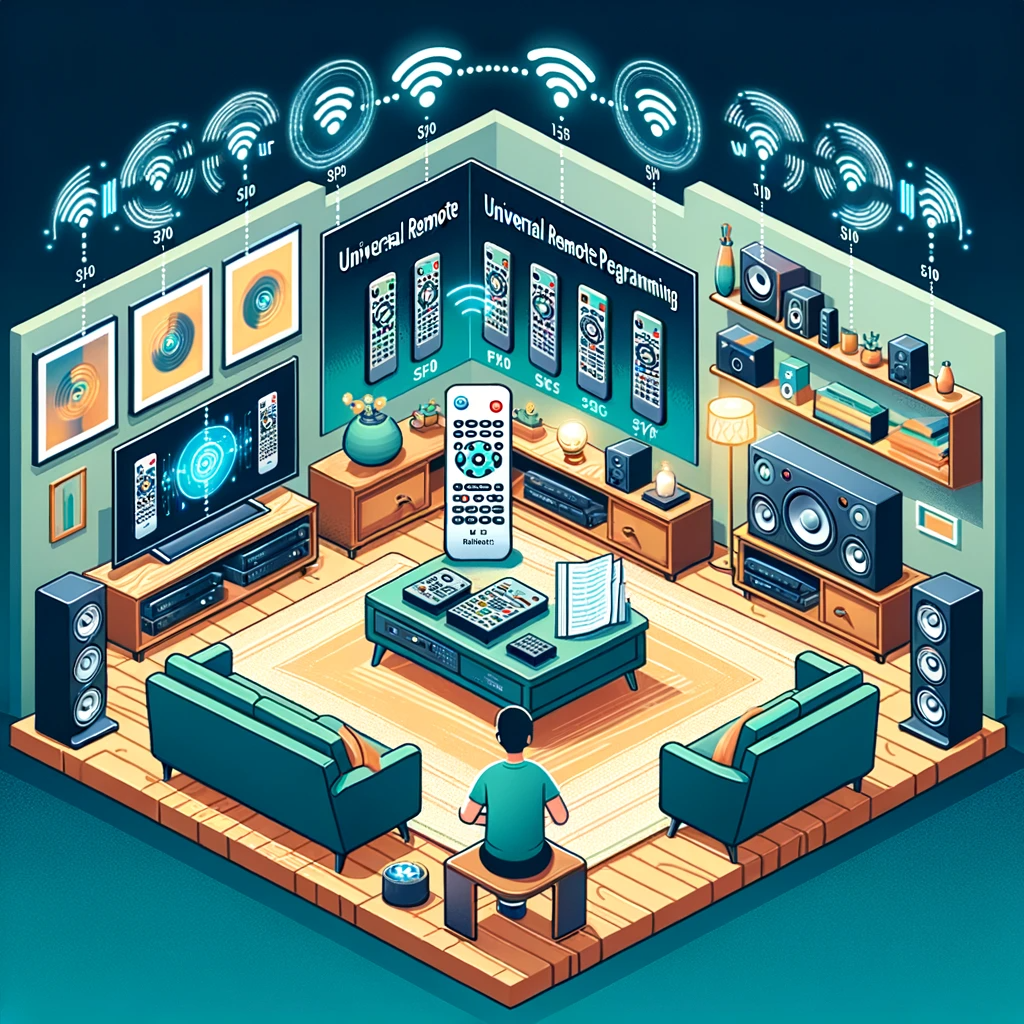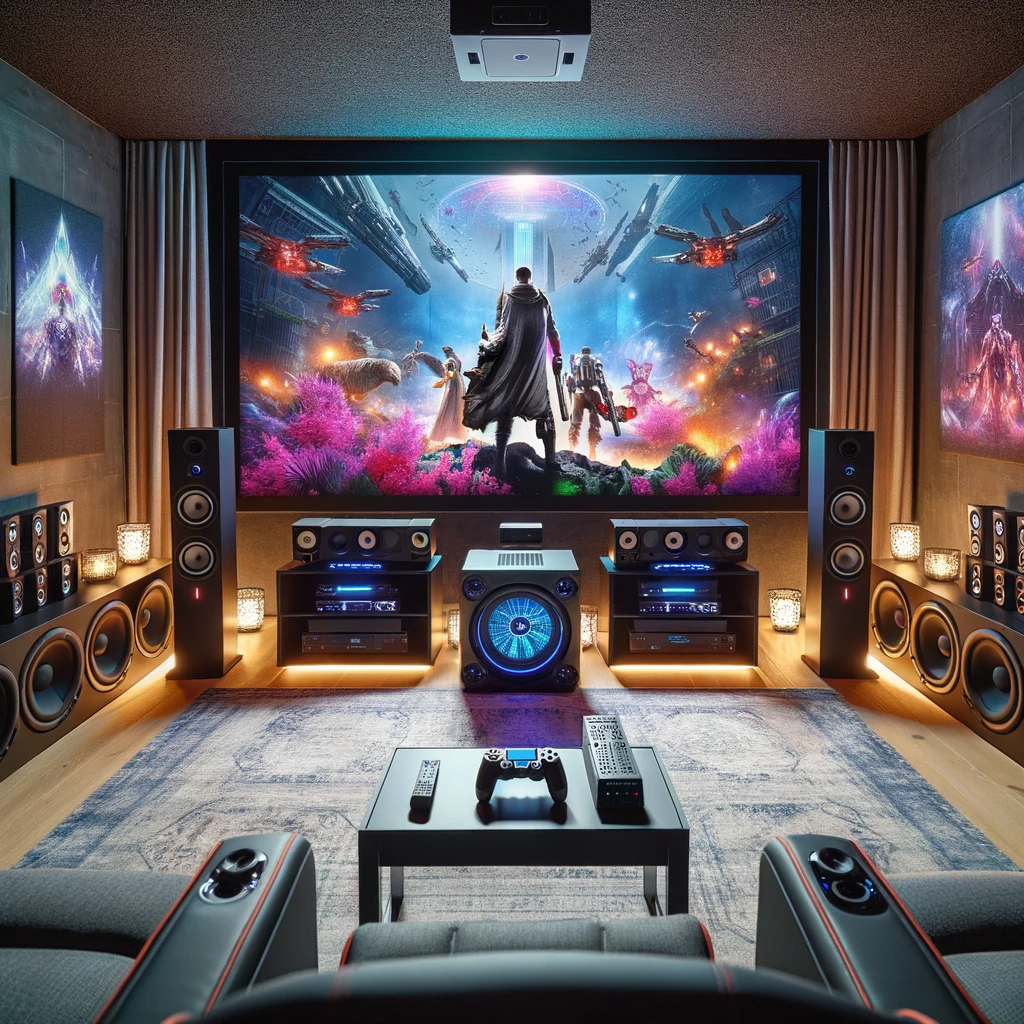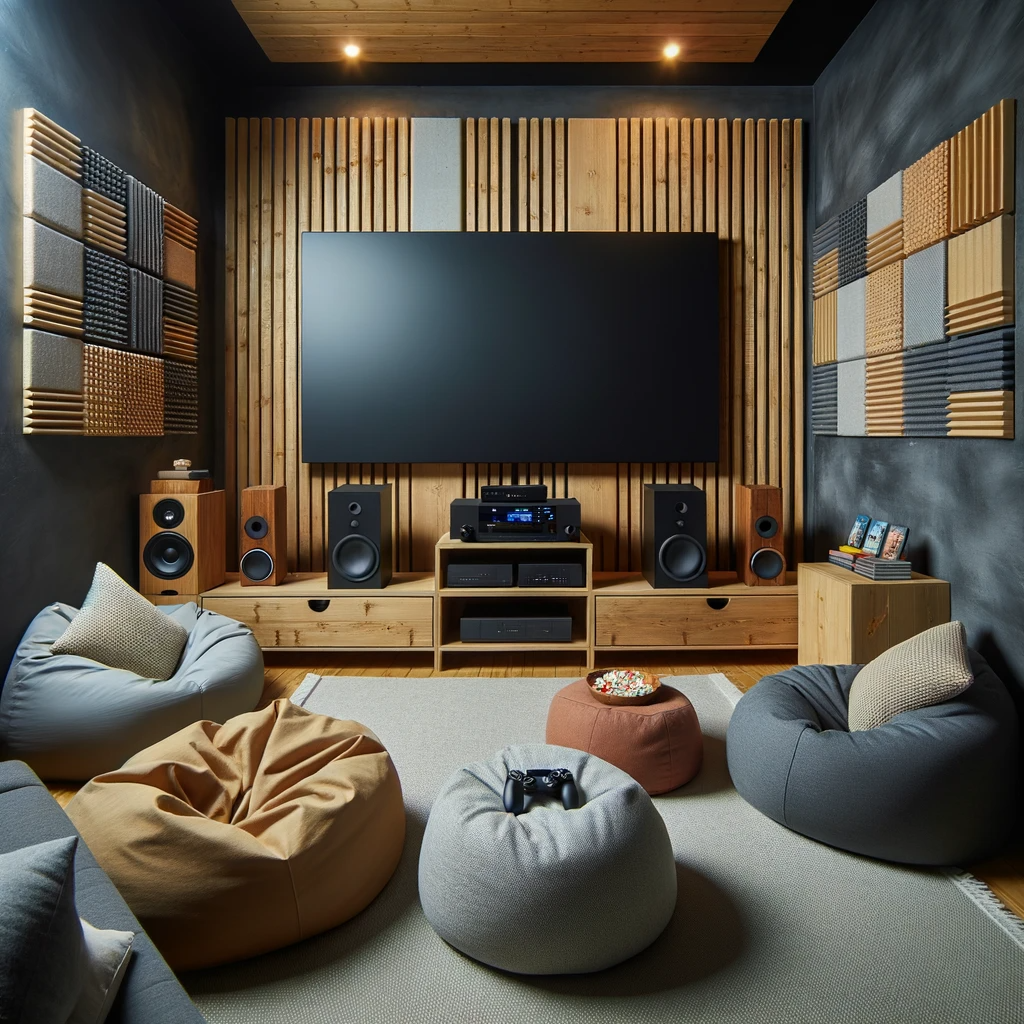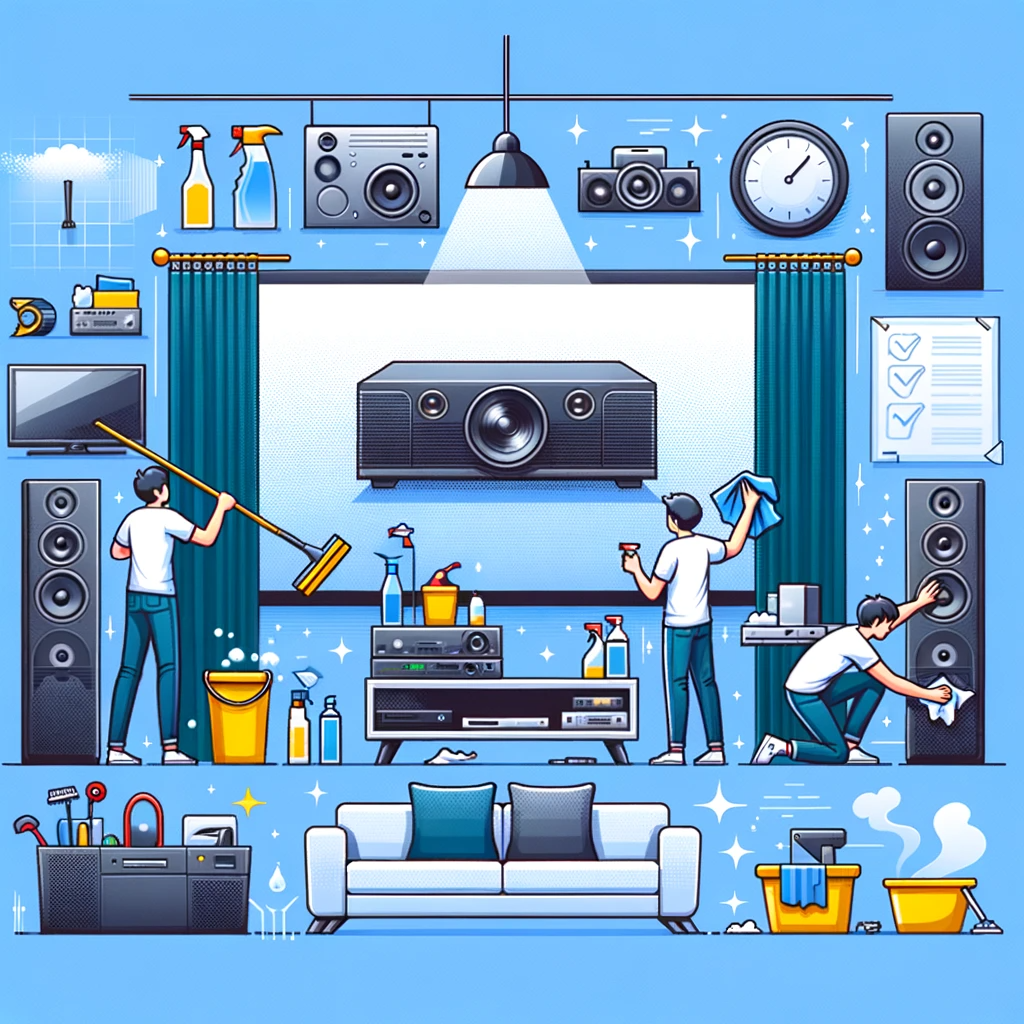Introduction
Defining the Home Theater Room
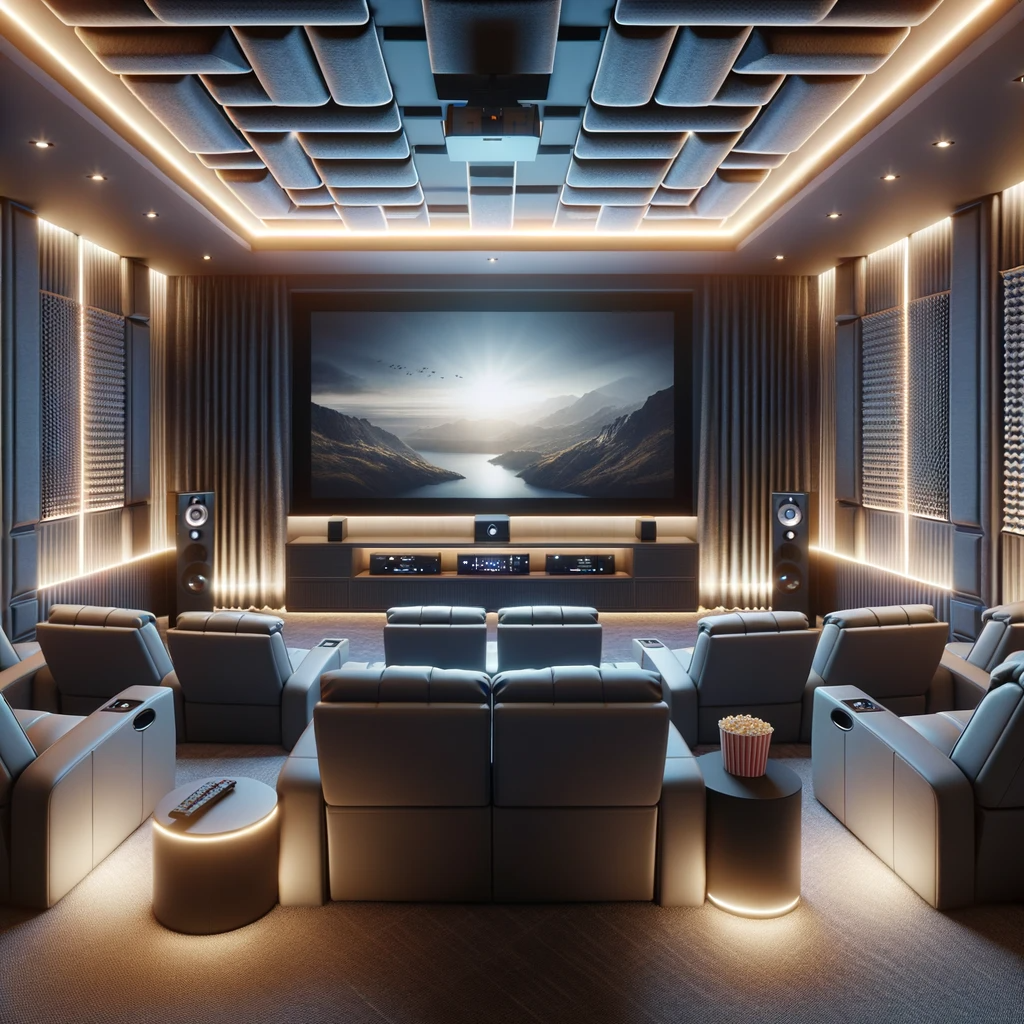
A home theater room is a dedicated space within a house designed to replicate the immersive movie-watching experience found in commercial theaters. It combines high-quality audio and video equipment, comfortable seating, and optimal room design to create an environment that transports viewers into their favorite films. The goal is to recreate the magic of going to the movies, but within the comfort and convenience of one’s own home.
The Importance of Proper Design for Immersive Movie-Watching
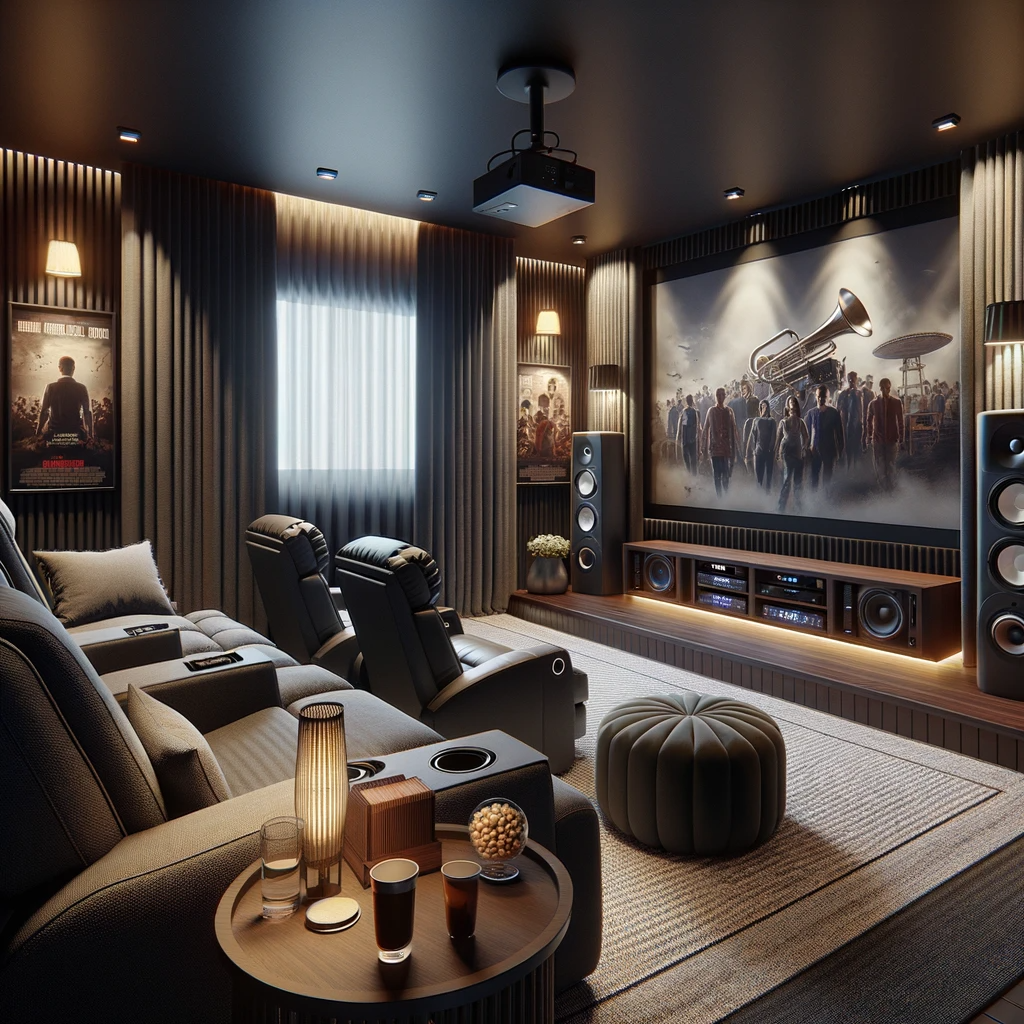
Proper design is crucial in creating an immersive movie-watching experience within a home theater room. Every aspect of the room’s layout, from its size and shape to its acoustics and lighting, has a significant impact on how movies are enjoyed.
A well-designed home theater room enhances audio performance, optimizes visual quality, minimizes distractions, and maximizes viewer comfort. By paying attention to each element of design, homeowners can transform their rooms into spaces that offer a truly cinematic experience.
Through careful planning and implementation of proper design principles, they can immerse themselves in their favorite movies with enhanced visuals, surround sound that envelops them from all directions, and an atmosphere designed for pure enjoyment. The result is an unforgettable movie-watching experience right at home.
Overall Room Layout
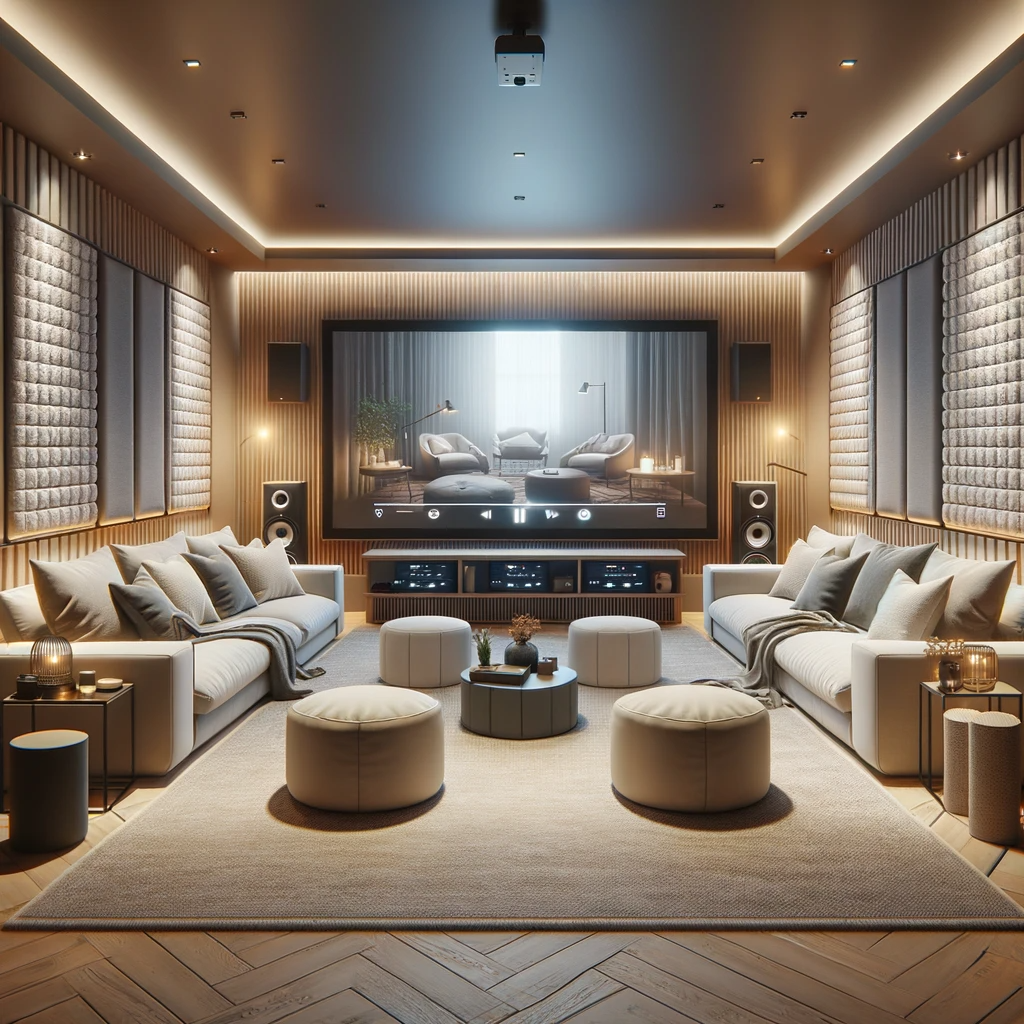
Choosing the right room for your home theater
Consider room size and shape. Properly evaluate available rooms. Take into account dimensions and seating capacity.
Ideal location within your house
Find a central location on the ground floor if possible. Consider accessibility and convenience for the audience. Ensure sufficient space for equipment installation.
Acoustics and Soundproofing
Importance of sound quality in a home theater
Sound quality greatly impacts the movie-watching experience. Immersive audio enhances realism and emotional engagement.
Tips for optimizing acoustics in the room
Use acoustic panels or diffusers to control sound reflections. Strategically place speakers and subwoofers for optimal performance. Achieve balanced audio by considering room dimensions, furniture placement, and reflective surfaces.
a) Using acoustic panels or diffusers
Install acoustic panels on walls to absorb excess sound energy. Use diffusers to scatter sound waves evenly across the room.
b) Proper placement of speakers and subwoofers
Position front speakers at ear level, forming an equilateral triangle with the primary seating area. Place subwoofers strategically to distribute low-frequency sounds uniformly throughout the space.
c) Soundproofing techniques to minimize external noise
Seal gaps around windows, doors, and vents to prevent sound leakage. Add mass-loaded vinyl or resilient channels to walls for enhanced sound isolation.
Screen and Projection System
Types of screens available for home theaters
There are two main types of screens commonly used in home theaters: fixed frame screens and motorized retractable screens. Fixed frame screens are permanently mounted to the wall, providing a flat and taut surface for projection. They offer excellent image quality due to their fixed position, eliminating any wrinkles or distortion that may occur with other screen types.
These screens come in various sizes and aspect ratios to suit different room dimensions and personal preferences. On the other hand, motorized retractable screens can be raised or lowered electronically when needed, providing a space-saving option for multipurpose rooms or areas with limited wall space.
These screens roll up into a casing when not in use, preserving the aesthetics of the room. They also offer flexibility in terms of screen size and aspect ratio options.
Choosing the right projector
When selecting a projector for your home theater, it is important to consider factors such as resolution, brightness, contrast ratios, and different types of projectors available. Resolution determines the level of detail in your projected image. Common resolutions include Full HD (1920×1080 pixels), 4K Ultra HD (3840×2160 pixels), and even higher-end options like 8K (7680×4320 pixels).
Higher resolutions generally provide sharper images but come at a higher cost. Brightness is measured in lumens and determines how well your projected image will appear in ambient light conditions.
For darker theater rooms, projectors with lower lumens may suffice, but brighter environments may require higher lumen outputs for optimal viewing. Contrast ratio refers to the difference between the darkest blacks and brightest whites that a projector can produce.
A higher contrast ratio results in more vibrant images with greater depth. There are three main types of projectors available: LCD (Liquid Crystal Display), DLP (Digital Light Processing), and LCoS (Liquid Crystal on Silicon).
LCD projectors offer accurate color reproduction, DLP projectors provide smooth motion and 3D capabilities, while LCoS projectors offer a combination of both with excellent black levels. By considering these aspects of screen and projector selection, you can ensure a visually stunning experience in your home theater.
Audio System Design
Selecting the right speakers
Choosing the right speakers for your home theater is crucial for a rich and immersive audio experience. The type of speakers you select will greatly impact the sound quality and overall performance of your system. Consider factors such as room size, budget, and personal preferences when making your decision.
Types of speakers (floor-standing, bookshelf, in-wall)
There are various types of speakers available in the market to suit different needs and spaces. Floor-standing speakers, also known as tower speakers, are large standalone units that provide robust bass response and high-quality sound.
They are ideal for larger home theaters with ample space. On the other hand, bookshelf speakers are compact in size and can be placed on shelves or mounted on stands.
They offer excellent sound reproduction and work well in smaller rooms or when space is limited. In-wall or ceiling speakers are designed to be discreetly installed flush into walls or ceilings, providing a clean look while delivering a seamless audio experience.
Speaker placement and positioning
Proper speaker placement plays a significant role in achieving optimal sound quality within your home theater room. For stereo systems, it is generally recommended to position the main left and right speakers at equal distances from the listening area to create an immersive soundstage. Additionally, consider angling them slightly inward towards the seating area for better stereo imaging.
For surround sound systems, place surround speakers at ear level either behind or to the sides of the seating area to enhance spatial effects. The center channel speaker should be positioned directly above or below the screen for clear dialogue reproduction during movies.
Surround sound formats
Two popular surround sound formats utilized in modern home theaters are Dolby Atmos and DTS:X. Dolby Atmos introduces height channels by adding overhead or up-firing speakers to create a three-dimensional sound experience. This format allows sounds to move freely around the room, enhancing immersion and realism.
DTS:X is another object-based audio technology that provides similar immersive audio effects by placing sounds precisely in a three-dimensional space. Both formats offer an enhanced cinematic experience, enveloping the viewer in a realistic sound environment.
Seating Arrangement
Comfortable seating options
Recliners or theater-style seats provide ultimate comfort for a home theater experience. These specialized seats feature plush cushioning and ergonomic designs, allowing viewers to relax and fully enjoy their favorite movies. With adjustable footrests and reclining mechanisms, recliners offer personalized comfort settings.
On the other hand, theater-style seats resemble those found in commercial cinemas, offering individual seating with armrests and cup holders. Both options provide excellent lumbar support and are available in various materials such as leather or fabric, allowing you to choose the one that suits your preferences and aesthetic.
Sectional sofas or bean bags can also be considered for a more casual home theater setup. Sectional sofas offer versatility by accommodating multiple individuals on spacious cushioned seating arrangements with the added benefit of a cozy lounge-like experience.
They can be customized to fit your room’s dimensions while providing flexibility in terms of configuration. Alternatively, bean bags offer a relaxed seating option that can be easily moved around, allowing viewers to find their perfect spot for an immersive movie-watching experience.
Optimal viewing distance from the screen
Calculating the ideal viewing distance is crucial for maximizing visual enjoyment in your home theater room. It is determined by considering the size of your screen and its resolution.
As a general guideline, divide the diagonal width of your screen by 0.84 to find the recommended viewing distance in feet (or multiply by 3 if you prefer meters). For example, if you have a 100-inch screen (diagonal), dividing it by 0.84 gives you approximately 119 inches or about 10 feet as the optimal viewing distance.
Maintaining this recommended distance ensures that viewers can fully appreciate details without straining their eyes or losing immersion due to pixelation. However, personal preference plays a role as well – some viewers might prefer a closer or farther viewing experience.
It’s essential to strike a balance between being comfortably close to the screen for a captivating experience and being far enough away to avoid visual discomfort. Experimenting with different distances can help you find the perfect compromise that suits your preferences and ensures an enjoyable home theater experience for everyone.
Lighting Design
Ambience through Illumination
- Use adjustable lighting options to create different moods and enhance the cinematic experience.
- Install dimmable overhead lights to provide general illumination that can be adjusted according to preference.
- Incorporate wall sconces or LED strip lights along the floor or ceiling to add a decorative touch and improve visibility in the room.
- Consider installing recessed lighting with dimmers to create a soft, diffused glow without distracting reflections on the screen.
Controlling Glare and Reflections
- Avoid placing light sources directly in front of or behind the seating area to prevent glare on the screen.
- Utilize blackout curtains or blinds to block out external light sources that could cause unwanted reflections on the screen.
- Install track lighting with adjustable heads to focus light onto specific areas, such as posters or artwork, without causing distractions for viewers.
Conclusion
Designing a home theater room involves careful consideration of various elements such as room layout, acoustics, screens and projectors, audio systems, seating arrangements, and lighting design. By following these tips and considering the specific needs and preferences of your household members, you can create an immersive movie-watching experience within the comfort of your own home.
With proper planning and attention to detail, you can transform any space into a personal cinema that will provide endless hours of entertainment for you and your loved ones. Enjoy your home theater experience!
